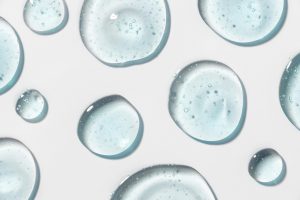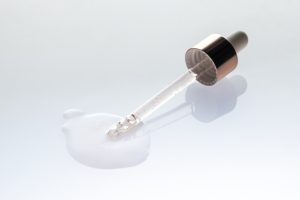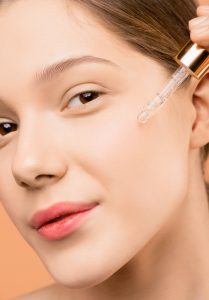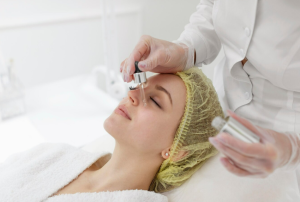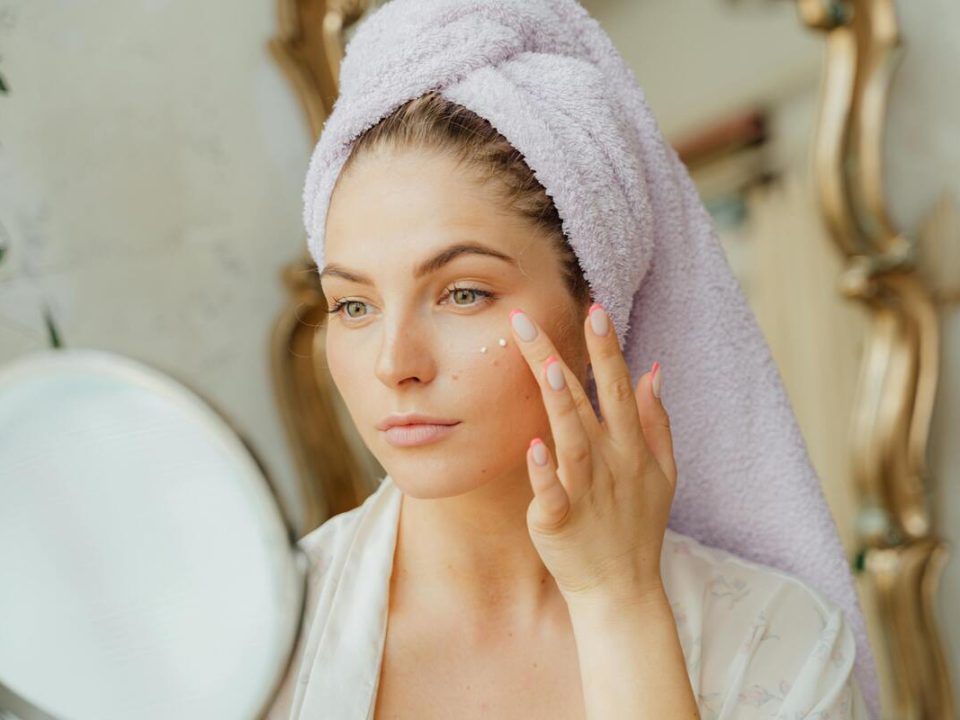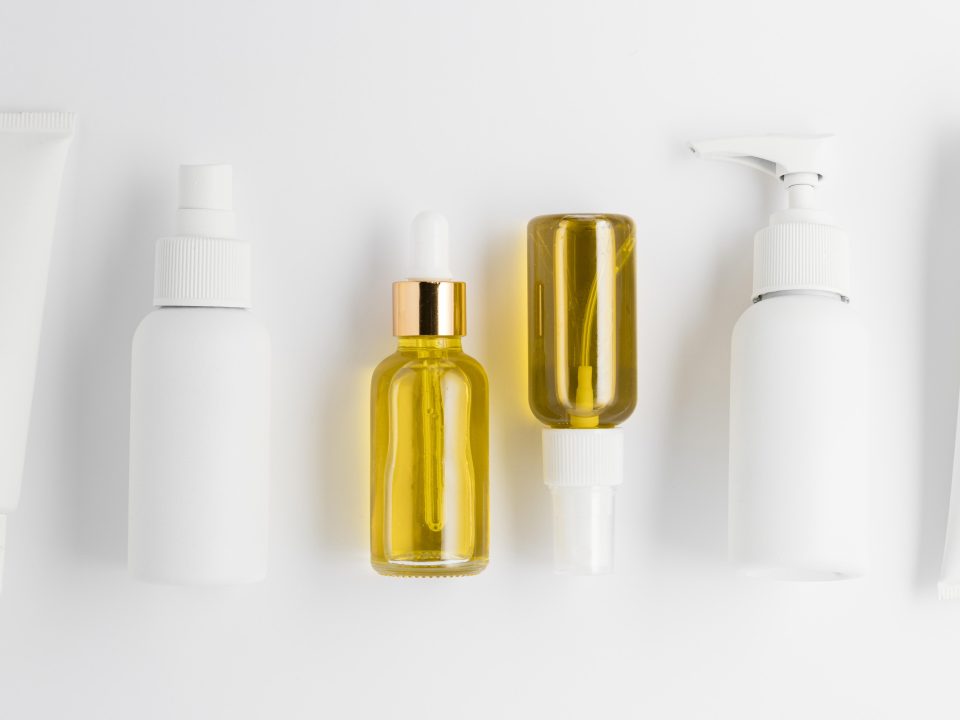Will Glycolic Acid Remove Dark Spots?
January 26, 2024What Does A Glycolic Acid Peel Do?
January 26, 2024What Is The Effect of Glycolic Acid Peeling?
Navigating the Peel Maze: Exploring Different Types of Glycolic Acid Peels and Their Effects
With a spectrum of options ranging from gentle at-home treatments to professional interventions, choosing the right glycolic acid peel can feel like traversing a labyrinth. Let’s illuminate the path by exploring specific types of peels based on their depth and target concerns:
Light Peels: Your Gateway to Gentleness (5-10% concentration)
Think of these peels as a welcoming handshake for your skin, ideal for beginners or those with sensitive complexions. Typically offered as at-home kits, they work on the surface layer, gently dissolving dead skin cells and promoting brighter, smoother texture. They can tackle:
Mild dryness and dullness: Kiss goodbye to flaky patches and lackluster skin.
Uneven tone: Lighten minor sun spots and reduce overall pigmentation variance.
Enlarged pores: Shrink the appearance of pores for a more refined texture.
Professional Light Peels: Stepping Up the Game (10-15% concentration)
These peels, administered by trained professionals, venture slightly deeper, targeting the upper layers of the epidermis. They’re recommended for those seeking to address concerns beyond basic exfoliation:
Mild acne: Combat blackheads, whiteheads, and prevent future breakouts.
Fine lines and wrinkles: Smooth out the early signs of aging and boost collagen production.
Acne scars: Minimize the appearance of shallow scars and improve skin texture.
Sun damage: Fade mild sun spots and uneven pigmentation caused by sun exposure.
Medium Peels: A Deeper Dive for Targeted Concerns (15-20% concentration)
For those seeking more noticeable results, medium peels delve deeper into the epidermis, reaching the papillary dermis. They’re best administered by dermatologists and require careful pre-peel preparation:
Moderate wrinkles and acne scars: Reduce the appearance of deeper lines, wrinkles, and acne scars.
Sun damage: Significantly improve sun-induced pigmentation and uneven tone.
Keratosis pilaris: Smooth out rough bumps caused by dead skin cell buildup.
Deep Peels: Reaching the Depths (30-70% concentration)
Due to their potent nature and potential side effects, deep peels are rarely used today and reserved for specific cases requiring expert supervision. They reach the deeper layers of the dermis, addressing:
Severe sun damage and precancerous lesions: Treat deeply entrenched pigmentation and precancerous skin growths.
Deep scars and wrinkles: Significantly improve the appearance of deep scars and wrinkles.
Finding Your Perfect Peel Match:
Remember, choosing the right type of peel depends on your individual needs and skin type. Consult a dermatologist for personalized guidance and ensure you understand the potential risks and recovery time associated with each type.
Beyond the Peel: A Holistic Approach:
For optimal results and sustained skin health, don’t stop at the peel. Embrace a holistic approach by:
Sun protection: SPF is non-negotiable, especially after peels. Protect your skin from further sun damage to maintain the peel’s benefits.
Hydration and nourishment: Gentle moisturizers and serums help skin recover from the exfoliation process.
Healthy lifestyle: Diet, sleep, and stress management play a crucial role in overall skin health.
By navigating the diverse world of glycolic acid peels with informed caution and a commitment to holistic care, you can unlock the potential for a radiantly brighter, smoother, and more youthful complexion.
Unveiling the Radiance of Glycolic Acid
Nestled within the world of skincare ingredients, a powerful molecule shines – glycolic acid. This humble sugar sibling, the smallest alpha-hydroxy acid (AHA), packs a punch when it comes to transforming your skin. Imagine it as a microscopic chisel, gently sculpting away dullness and revealing the luminous beauty beneath.
Glycolic acid, naturally occurring in sugarcane and other fruits, is a darling of the skincare world for good reason. Its chemical prowess lies in its ability to dissolve the bonds that hold dead skin cells together, a process known as keratolysis. This exfoliating action not only polishes away the surface, but also triggers a cascade of positive effects within your skin.
Enter the realm of glycolic acid peels, the concentrated form of this wonder molecule. Think of them as targeted treatments, wielding the power of glycolic acid in varying strengths to address a multitude of concerns. From gentle at-home options to professional peels administered by dermatologists, there’s a perfect match waiting to awaken your skin’s hidden potential.
But amidst the promises of brighter, smoother, and younger-looking skin, a crucial question arises: What is the true effect of glycolic acid peeling? How does this microscopic chisel wield its magic, and what benefits and potential pitfalls lie within its domain?
This intricate journey invites you to delve deeper into the fascinating world of glycolic acid peels. We’ll embark on a research-backed exploration, unraveling the science behind different peel types and their specific effects. We’ll navigate the terrain of potential side effects, equipping you with knowledge to ensure safe and effective use. And finally, we’ll unveil best practices, like a treasure map guiding you towards a radiant destination.
So, embrace your inner explorer, and prepare to unveil the true power of glycolic acid peels. With each step, we’ll shed layers of uncertainty, revealing the transformative potential that lies within reach. Buckle up, for our journey towards a radiant and rejuvenated you begins now!
Deep Dive into the World of Glycolic Acid Peels: Understanding How They Work
Exfoliation Powerhouse:
Glycolic acid, like other AHAs (alpha-hydroxy acids), works its magic by dissolving the bonds that hold dead skin cells together. This process, known as keratolysis, removes the built-up layer of dead and dull cells, revealing the vibrant, smoother skin beneath. Think of it as polishing away the rough outer layer to unveil the gleaming surface underneath.
Collagen Boost for Youthful Glow:
But glycolic acid’s power goes beyond simple exfoliation. It dives deeper, stimulating the production of collagen, the skin’s essential protein responsible for maintaining its plumpness and elasticity. As collagen production increases, your skin regains its firmness and youthful bounce, reducing the appearance of fine lines and wrinkles.
Targeting the Pigmentation Puzzle:
Hyperpigmentation, those pesky dark spots and uneven skin tone, can be a major concern. Glycolic acid steps in here too, by interfering with melanin production, the pigment responsible for skin color. By slowing down melanin production, it helps fade existing dark spots and prevents new ones from forming, leading to a more even and radiant complexion.
Exploring the Peeling Spectrum:
Now, let’s venture into the territory of glycolic acid peels, their strengths, and depths.
Superficial Peels (5-10% concentration): Gentle warriors, these peels work on the outermost layer of skin, ideal for beginners seeking exfoliation, brightening, and smoother texture. Think of them as a light dusting of magic powder.
Medium Peels (10-20% concentration): Venturing deeper, these peels reach into the middle layers, tackling wrinkles, acne scars, and sun damage. Imagine them as a more thorough polishing, revealing hidden beauty within.
Deep Peels (30-70% concentration): Used only by professionals due to their potent nature, these peels target the deepest layers, addressing severe sun damage and precancerous lesions. Think of them as a meticulous restoration project, requiring expert hands and careful consideration.
Factors at Play:
The depth and effect of a glycolic acid peel aren’t solely determined by concentration.
Application Time: Leaving the peel on longer allows it to penetrate deeper, but requires careful monitoring to avoid irritation.
Skin Type and pH: Thicker skin can handle stronger peels, while sensitive skin benefits from gentler options. Your skin’s pH also plays a role, as acidic environments (lower pH) enhance the acid’s action.
Remember, understanding these factors helps you choose the right peel for your skin type and desired outcome.
Decoding the Science: Research on Glycolic Acid Peels
The world of cosmetic peels boasts a captivating blend of anecdotes and promises, but what does science say about glycolic acid peels? Let’s dive into the evidence-based research to uncover their true potential and limitations.
Clinical Trials: Unmasking the Benefits:
Improved Skin Texture: A 2020 study published in the Journal of Drugs in Dermatology compared a 10% glycolic acid peel to a placebo in treating aging skin. After 12 weeks, the peel group showed significant improvements in skin roughness, fine lines, and overall texture, indicating its exfoliating and collagen-boosting prowess.
Wrinkle Reduction: A 2018 meta-analysis published in the International Journal of Women’s Dermatology analyzed multiple studies on glycolic acid peels for wrinkles. The analysis concluded that peels with concentrations ranging from 10% to 20% effectively reduced the appearance of fine lines and wrinkles, especially when combined with sunscreen and a proper skincare routine.
Fading Hyperpigmentation: A 2015 study published in the Journal of Cosmetic Dermatology investigated the use of glycolic acid peels for post-inflammatory hyperpigmentation (PIH). The study found that regular application of 15% glycolic acid peels significantly lightened PIH spots, revealing a more even skin tone.
Face-to-Face with Other Acids:
The world of chemical peels offers a range of options, each with its own strengths. Here’s how glycolic acid stacks up against some popular contenders:
Lactic Acid: Gentler than glycolic acid, lactic acid is ideal for sensitive skin. It excels at hydrating and exfoliating, making it a good choice for dryness and uneven texture.
Salicylic Acid: Oil-soluble salicylic acid shines in tackling acne and blackheads. It penetrates pores, exfoliates dead skin cells, and has anti-inflammatory properties. While it can be combined with glycolic acid for enhanced benefits, using both requires careful monitoring due to potential irritation.
Long-Term Lens: Beyond the Initial Glow:
Studies are shedding light on the long-term effects of glycolic acid peels. A 2023 study in the Journal of the American Academy of Dermatology assessed the sustained benefits of a 15% glycolic acid peel after one year. The results showed continued improvement in skin texture, wrinkles, and hyperpigmentation, highlighting the peel’s potential for lasting results with consistent use.
However, long-term studies also reveal potential drawbacks. A 2021 study in the Archives of Dermatological Research examined the risk of hyperpigmentation after glycolic acid peels in darker skin tones. The study found that using peels without proper sun protection and pre-treatment could worsen existing pigmentation issues.
Limitations and the Quest for Clarity:
While research paints a promising picture for glycolic acid peels, acknowledging its limitations is crucial:
Individual Variations: Just like fingerprints, our skin responds differently. Factors like skin type, ethnicity, and pre-existing conditions influence how individuals react to peels.
Blinding Challenges: In peel studies, blinding participants to which treatment they receive is difficult. This can introduce subjectivity into the results.
Need for Larger Studies: More long-term, controlled studies with larger sample sizes are needed to further refine our understanding of the long-term benefits and potential risks of glycolic acid peels, especially for diverse skin types.
Unmasking the Truth:
Research on glycolic acid peels offers compelling evidence for their potential to improve skin texture, reduce wrinkles, and fade hyperpigmentation. However, it’s essential to approach them with informed caution, acknowledging individual variations, limitations, and the need for a holistic approach encompassing sun protection and proper skincare.
Navigating the Shadows: Understanding Potential Side Effects of Glycolic Acid Peels
While glycolic acid peels offer tantalizing promises of brighter, smoother skin, it’s essential to acknowledge the shadows that can accompany them. Let’s shed light on potential side effects and delve into strategies to minimize risks, ensuring your journey with glycolic acid peels is as smooth as your desired complexion.
Temporary Discomfort:
Think of stinging, redness, and mild irritation as the peel’s initial handshake. These are common temporary reactions, especially with higher concentrations or sensitive skin. They usually subside within a few hours or days with proper post-peel care.
Dryness and Peeling:
As glycolic acid exfoliates, your skin might experience dryness and temporary peeling. This is a natural part of the process, but excessive dryness can be uncomfortable. Opt for gentle, hyaluronic acid-rich moisturizers and soothing serums to combat this.
Hyperpigmentation:
For darker skin tones, the risk of hyperpigmentation (worsening of existing dark spots) is a serious concern. Overexposure to sun after a peel can exacerbate this. Patch testing and consulting a dermatologist who specializes in darker skin tones are crucial before opting for any peel.
Scarring:
While rare, scarring can occur, especially with deeper peels or improper application. This risk highlights the importance of seeking professional expertise for anything beyond light peels.
Mitigating the Risks:
Now, let’s turn the spotlight on strategies to minimize these potential side effects:
Patch Test: This simple step can reveal potential sensitivities before embarking on a full peel.
Professional Consult: A dermatologist can assess your skin type, concerns, and risks, guiding you towards the safest and most effective peel option.
Careful Application: Follow instructions meticulously, ensuring even application and avoiding sensitive areas like eyes and lips.
Post-Peel Care: Gentle cleansing, hydration, and religious sun protection are key to optimal healing and minimizing risks.
Listen to Your Skin: If you experience intense discomfort, stop the peel or consult your dermatologist immediately.
Remember, while side effects are a possibility, adopting a cautious approach and prioritizing expert guidance can help you navigate the peel process with confidence, minimizing shadows and maximizing the glow.
Demystifying the Peel: A Guide to Safe and Effective Use of Glycolic Acid Peels
Unveiling the radiant you beneath lies the potential of glycolic acid peels. But navigating this journey requires more than just enthusiasm; it demands careful preparation, meticulous post-peel care, and a mindful approach. Let’s unlock the secrets of safe and effective use, ensuring your peel journey is as luminous as the results you seek.
Prepping for Your Glow:
Laying the Foundation: In the weeks leading up, pamper your skin with a gentle but consistent skincare routine. Exfoliate regularly (but avoid harsh scrubs!) and prioritize hydration. A healthy base optimizes results and minimizes potential irritation.
Sun’s Out, Peels Are Out: Bid farewell to excessive sun exposure for at least two weeks before and after your peel. UV rays amplify sensitivity and risk hyperpigmentation. Seek shade, don a wide-brimmed hat, and slather on SPF 30+ sunscreen religiously.
A Medication Checkup: Certain medications (like Retin-A or some antibiotics) can increase photosensitivity and interact with the peel. Consult your doctor or dermatologist to ensure everything is in harmony before proceeding.
Post-Peel Nurturing:
Gentle Touches: Treat your skin like a newborn butterfly. Opt for gentle, fragrance-free cleansers and moisturizers. Pat your skin dry instead of rubbing, and embrace lukewarm water over hot showers.
Sun is Still the Enemy: Remember your newfound sun-sensitivity? SPF remains your BFF, even on cloudy days. Reapply every two hours and shield yourself from direct sunlight.
Dryness and Irritation, Not Uninvited Guests: Dryness and mild irritation are common post-peel visitors. Combat them with hyaluronic acid serums and soothing moisturizers. If the intensity or duration becomes concerning, don’t hesitate to reach out to your dermatologist.
DIY Peeling with Caution:
At-home peels offer tempting convenience, but proceed with caution:
Know Your Skin: Choose peels formulated for your skin type and concerns. Consult a dermatologist if you have sensitive skin, pre-existing conditions, or darker skin tones.
Instructions Are Your Map: Follow the product instructions meticulously. Patch test on a small area first, and never exceed recommended application time.
Listen to Your Skin’s Whispers: If you experience intense burning, stinging, or prolonged redness, stop immediately and consult your dermatologist. Remember, safety trumps any DIY allure.
Seeking Professional Expertise:
For deeper peels or if you have sensitive skin, pre-existing conditions, or darker skin tones, consulting a dermatologist is non-negotiable. They can assess your skin, recommend the most effective and safe peel, and provide personalized guidance throughout the process. Remember, their expertise can navigate the nuances of your skin, ensuring a journey towards a radiantly healthy complexion.
By embarking on your glycolic acid peel journey with meticulous preparation, gentle post-peel care, and a commitment to safety, you can unlock the transformative potential of this treatment. Remember, knowledge is your shield, caution your compass, and your dermatologist a valued ally. So, embrace the peeling process with confidence, knowing that beneath the temporary shadows lies the promise of a luminous, youthful glow.
Unveiling the Radiance: A Final Glow on Glycolic Acid Peels
Our journey through the world of glycolic acid peels nears its end, leaving behind a trail of knowledge and possibilities. Let’s revisit the key points, ensuring your understanding shines as brightly as the results you seek.
A Mosaic of Benefits:
Glycolic acid peels offer a captivating mosaic of potential benefits, targeting concerns like rough texture, fine lines and wrinkles, uneven pigmentation, and stubborn acne. They work their magic by exfoliating dead skin cells, stimulating collagen production, and fading stubborn dark spots. However, remember, these are tools, not miracle workers. Set realistic expectations, knowing that noticeable results are gradual and require consistent effort.
Safety Reigns Supreme:
While the allure of a glowing complexion is strong, prioritize safety every step of the way. Prepare your skin with a gentle routine, avoid sun exposure and photosensitizing medications, and embrace post-peel care like a trusted friend. If venturing into at-home peels, choose wisely and listen to your skin’s whispers. Remember, for deeper peels or specific concerns, a dermatologist’s expertise is your guiding light.
Holistic Beauty Blooms:
Glycolic acid peels may be the catalysts, but a holistic approach is the secret to sustained radiance. Protect your skin from the sun’s harsh rays, nourish it with a regular skincare routine, and embrace healthy lifestyle choices. Remember, internal well-being reflects on your outward glow.
A Glimmering Future:
The journey with glycolic acid peels invites you to witness your skin’s transformative potential. With informed choices, careful preparation, and a commitment to holistic well-being, you can unveil smoother, even-toned, and youthful-looking skin. Embrace the possibilities, knowing that beneath the temporary shadows lies the promise of a radiant, healthy complexion.
So, embark on your peel journey with confidence, armed with knowledge, empowered by caution, and inspired by the potential of this powerful treatment. Remember, the glow you seek awaits, ready to illuminate the world with your newfound radiance.
This conclusion recaps the key points, emphasizing the importance of realistic expectations, safe and effective use, and a holistic approach to skin health. It ends on a positive note, highlighting the potential of glycolic acid peels to improve skin texture, reduce hyperpigmentation, and promote a radiant, youthful complexion.


